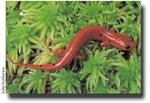Bog
| Topics: |
Introduction
Carlisle Bog in Alaska. Unlike the rest of the United States, Alaska still has most of its wetlands. Bogs are one of North America's most distinctive kinds of wetlands. They are characterized by spongy peat deposits, acidic waters, and a floor covered by a thick carpet of sphagnum moss. Bogs receive all or most of their water from precipitation rather than from runoff, groundwater (Bog) or streams. As a result, bogs are low in the nutrients needed for plant growth, a condition that is enhanced by acid-forming peat mosses.
There are two primary ways that a bog can develop: bogs can form as sphagnum moss grows over a lake or pond and slowly fills it (terrestrialization), or bogs can form as sphagnum moss blankets dry land and prevents water from leaving the surface (paludification). Over time, many feet of acidic peat deposits build up in bogs of either origin. The unique and demanding physical and chemical characteristics of bogs result in the presence of plant and animal communities that demonstrate many special adaptations to low nutrient levels, waterlogged conditions, and acidic waters, such as carnivorous plants.
Functions and Values
Bogs serve an important ecological function in preventing downstream flooding by absorbing precipitation. Bogs support some of the most interesting plants in the United States (like the carnivorous sundew), and provide habitat to animals threatened by human encroachment.
Status
Bogs in the United States are mostly found in the glaciated northeast and Great Lakes regions (northern bogs), but also in the southeast (pocosins). Their acreage declined historically, as they were drained to be used as cropland, and mined for their peat which was used as a fuel and a soil conditioner. Recently, bogs have been recognized for their role in regulating the global climate by storing large amounts of carbon in peat deposits. Bogs are unique communities that can be destroyed in a matter of days, but require hundreds, if not thousands, of years to form naturally.
| Disclaimer: This article is taken wholly from, or contains information that was originally published by, the Environmental Protection Agency. Topic editors and authors for the Encyclopedia of Earth may have edited its content or added new information. The use of information from the Environmental Protection Agency should not be construed as support for or endorsement by that organization for any new information added by EoE personnel, or for any editing of the original content. |
